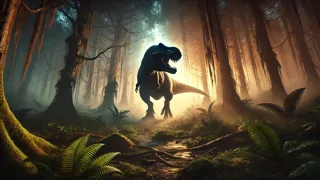Introduction
A hush falls upon Sleepy Hollow at dusk, when lanterns flicker behind shuttered windows and a faint silver haze drifts through skeletal trees. In this secluded bend of the Hudson Valley, rumors thrive of a phantom rider whose furious gallop and rattling chain portend doom. They say he was once a Hessian soldier—brave, loyal, and undone by tragedy. One terrible night, in the final throes of battle, his head was severed by a stray cannon blast. He rose again at midnight, astride a coal-black steed, cursed to hunt tirelessly for the head that would grant him rest. The villagers whisper prayers to ward off his wrath, leaving offerings at crossroad shrines and carving protective wards into doorframes. Yet curiosity proves stronger than fear. Young Ichabod Crane, drawn by tales of spectral knights and miraculous treasure buried under long-forgotten oak, vows to catch a glimpse of the Horseman and unveil the truth. As the moon reaches its apex, a chill seeps into bone and breath, awakening a longing in the earth itself. From the far edge of the wood, hoofbeats drum like a funeral march. A rider, headless and horrified, emerges from the mist—pale moonlight glinting on cold steel and phantom eyes burning with an ancient sorrow. His search will not cease until he reclaims the one thing that makes him whole: his own lost head.
Origins of the Rider
Long before Sleepy Hollow found its place in legends, there lived a young Hessian soldier named Wilhelm Van Brunt. He was counted among the cavalry’s finest—tall, resolute, and devoted to his homeland’s cause. Stationed on the American frontier, he found both brutality and camaraderie in equal measure. The nights were sleepless, punctuated by distant cannon fire and the low murmur of conspiracy. It was on one ice-bound evening, under a pale December moon, that his life changed forever. A cannonball tore through the dark, striking him with such force that the world spun into disarray. He fell, his grip on the reins loosening as frost gathered in his veins. When the dawn broke, the battle had moved on, leaving him a twisted husk in the mud. The villagers who stumbled upon the battlefield spoke of horror: a soldier, still breathing, yet headless, his uniform shredded and frozen to his chest.

They carried him back to the nearest settlement, but no surgeon could repair the damage. In the biting cold, his eyes still flickered with awareness. That very night, an unearthly chill settled over the town. The church bells tolled on their own, and windows rattled without wind. Lanterns guttered out in the streets, and those who dared to peer from behind curtains whispered of a galloping steed, the clamor of hooves echoing with unnatural urgency. When fear drove the townspeople from his quarters, they found nothing but a dark stain on the floorboards and a single, battered jack-o’-lantern.
Within days, the first sightings began. A phantom rider, trailing candlelight and spectral mist, raced along the riverbanks and over the stone bridges. Some claimed he tossed heads like litter into the swamp; others said he raised lost soldiers from shallow graves, offering them passage in his quest. The story grew with each retelling—an unstoppable force of rage and sorrow. Scholars and preachers debated his nature: demon or cursed man, agent of vengeance or victim of fate. Meanwhile, Sleepy Hollow braced for each winter’s nightfall, carving wards into doorposts, huddling around hearth fires, and listening for the distant drum of hooves.
Thus, the legend of the Headless Horseman was born, woven into the very roots of the valley, destined to haunt every generation that dared to tunnel into the shadows of the past.
The Haunting Pursuit
As decades passed, Sleepy Hollow’s inhabitants never grew immune to the Horseman’s presence. Each winter, his hunt grew more relentless, his form more defined. He began to appear at twilight, often near the stone bridge that arcs over the Old Dutch Kill. Travelers who lingered too long spoke of a lantern bobbing behind them in the gloom, a low hiss carried on the wind, and then that unmistakable clamor of hooves. Hearts seized with dread at the cadence of his approach. Some would sprint—feet slipping on frost-slick stones—only to look back and find the spectral glow edging ever closer.

One bitterly cold evening, a handful of townsfolk dared to lay a trap. They set lanterns ablaze along the riverbank, hoping to lure him into a ring of iron chains and consecrated stakes. When the Horseman emerged, the warmth of the fire flashed upon his armor and bones, illuminating the empty collar of his tunic. He reared his steed, a furious silhouette against the flames, and let loose a scream that echoed off distant hills like thunder. Then he charged the circle, smashing through iron and holy symbols as if they were dreams. The earth quaked beneath the horse’s pounding hooves, and a blast of chilled wind reduced torches to embers. When dawn arrived, the trap was a ruin—charred stakes twisted into grotesque shapes, and not a trace of the rider remained.
Yet Sleepy Hollow refused to surrender to fear. Tavern tales grew vivid, describing how he paused before moonlit windows, scanning inside for something he could not name. Coins turned cold at his approach; dogs whimpered like lost children; even the river’s surface froze in his path. Some suggested he sought not only his head but also a vessel to hold the anger that anchored him to this world. A few claimed that if the right ritual were performed—an act of compassion rather than violence—he might finally be freed. Others scoffed, insisting that curses deepen with each attempt to break them.
Through every whispered warning and failed exile, the Horseman’s legend grew, binding Sleepy Hollow to a story of sorrow and power that outlived time itself. Villagers learned to respect the unseen, leaving offerings at crossroads: fresh-cut wheat, flickering candles, and carved pumpkins to distract him from venturing too close. But as new roads were carved and modern lanterns brightened the night, the mortal realm edged ever nearer to the edge of his realm, and the haunting chase became more desperate than ever.
Unraveling the Curse
In the modern age, folklore scholars and amateur ghost hunters descended upon Sleepy Hollow drawn by the Horseman’s enduring enigma. They combed dusty archives and translated crumbling diaries, piecing together fragments of Wilhelm Van Brunt’s life. Some letters hinted at a forbidden romance with a local miller’s daughter, a love severed by war and promises left unfulfilled. Others spoke of dark pacts whispered in candlelit chambers, binding the soldier’s spirit until he reconciled his final regrets. According to one fragmented account, a traveling mystic attempted a ritual under a blood moon, chanting blessings in Hebrew and Dutch. The ritual was interrupted by baying wolves, and those present perished without trace, their names stricken from church records.

Spurred by these discoveries, a small band of seekers resolved to free the Horseman by completing the interrupted rite. They gathered oak wood from the haunted forest, silver dust from a long-sealed alchemist’s journal, and an old jack-o’-lantern carved from the very pumpkin that once bore his head. On a frigid night when the moon turned red, they assembled beside the old stone bridge. The atmosphere pulsed with energy as each incantation echoed through the pines. With every invocation, the wind rose, swirling mist into ghostly forms that drifted like sorrow itself. A thunderous cadence of hooves grew near, and a high voice—like metal scraped on bone—cried out in anguish.
The Horseman burst through the ritual circle, axe raised in skeletal grip. But as the final words rang out, a bright glow enveloped his figure. His lantern cast concentric rings of light, and his armor, once dulled by age, shone with a fierce brilliance. For a moment, his headless form paused, the air trembling with ancient frustration. Then, in a rush of wind and a shower of amber sparks, a severed skull fell at his horse’s hooves, etched with the mystic’s runes. The Horseman reared, tossing the pumpkin lantern high. The seal broke with a thunderclap that shook the bridge stones, and the phantom rider dissolved into drifting embers that scattered across the river’s surface.
At dawn, Sleepy Hollow’s residents emerged to find the river running free, the mist lifting like a veil. The severed skull lay half-submerged in icy water, its carved runes faint under the rising sun. Many believed the curse was lifted—that at last the Headless Horseman had found peace. Yet some swear that on moonless nights, far from the bridge’s arch, faint hoofbeats still tremble in the dark, and the wind carries a distant wail of longing.
Conclusion
By the time the sun rose over Sleepy Hollow, the air felt lighter, as if the valley itself breathed a sigh of relief. The ancient curse that bound Wilhelm Van Brunt’s spirit had been severed by compassion and ritual, rather than iron and fear. In the days that followed, villagers reported calmer nights, the moon’s reflection rippling gently on the river, free from phantom hoofprints. Scholars documented every detail, preserving the ritual that ended the Rider’s hunt in small leather-bound volumes. Travelers still visit the stone bridge at dusk, leaving candles and carved pumpkins—silent tributes to a legend that reshaped an entire community’s fate. Yet for those who remember the sound of distant hooves, the story of the Headless Horseman remains a reminder that some spirits linger until their tales are told and their regrets atoned. The legend endures, passed from one storyteller to the next, ensuring that the mirror between the living and the dead never dims entirely, and that remembrance itself can light the darkest path.



















